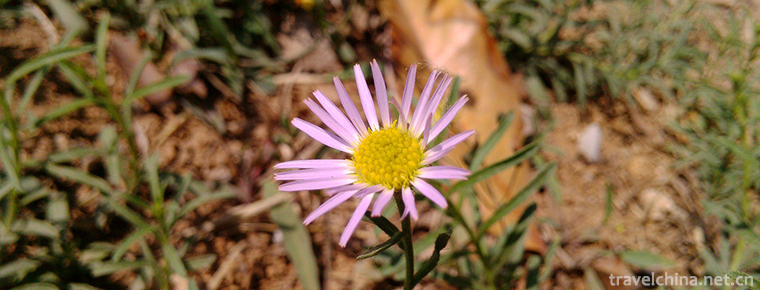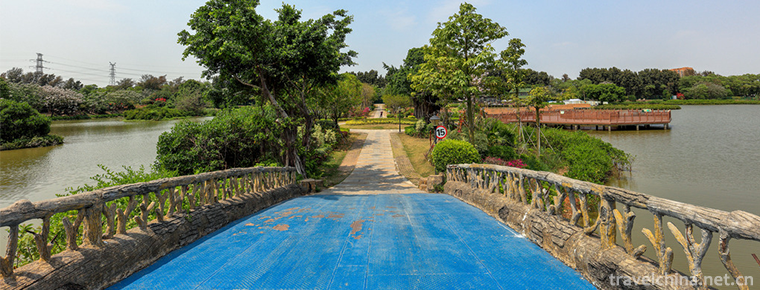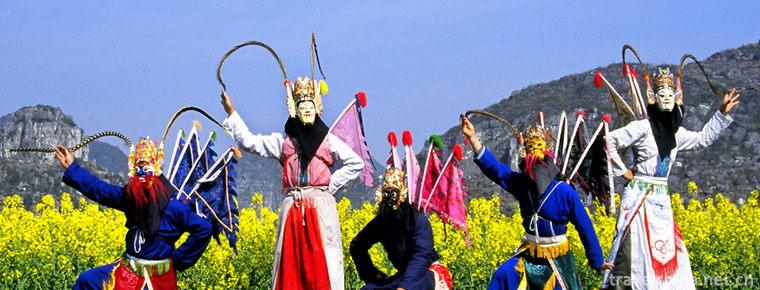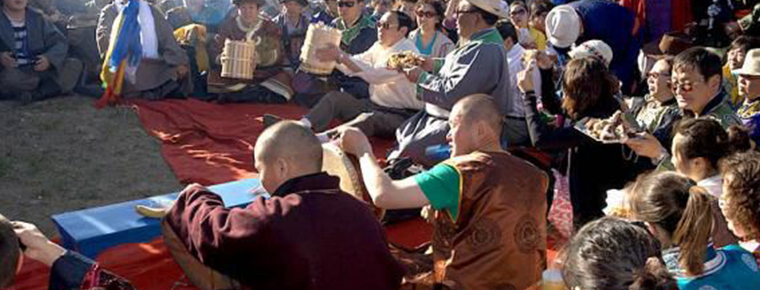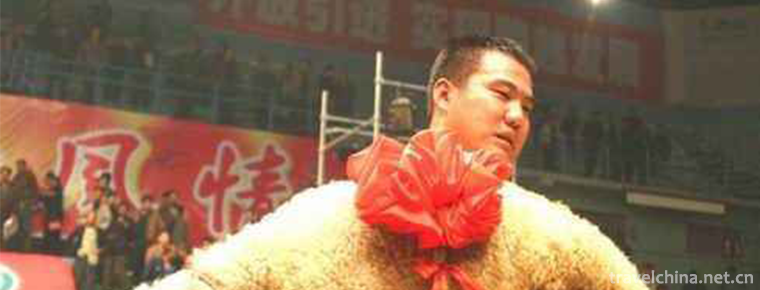Shandong Express Book
Shandong Express Book
Shandong Quick Book, originating from Shandong Province's local traditional folk art form, has a history of more than 100 years. It was first popular in Shandong, North China and Northeast China, and developed throughout China after liberation. The singer holds bamboo board or Mandarin Duck board and sings with fast rhythm, so it is also called bamboo board fast book.
Since Zhao Zhen, there have been some famous writers such as Gao Yuanjun, Yang Lide and Liu Sichang, who have promoted the development of Shandong Fast Book Art. On May 20, 2006, the opera was approved by the State Council and listed in the first batch of national intangible cultural heritage list.
Historical Origin
Shandong Express Books originated in Linqing, Jining and Yanzhou of Shandong Province, and have a history of more than 100 years. About the origin of Shandong Express Books. There have always been three kinds of legends, namely Liu Maoji, Zhao Dagu and Fu Hanzhang.
Liu Maoji said
Liu Maoji, according to legend, was born in Wanli period of Ming Dynasty. Linqing, Shandong Province, is the birthplace of Shandong Express Book. He is an undesirable Wu Juren, living in the countryside, collecting local stories of Wusong, compiled into Shandong Express Book singing. His way of acting is very "native". He has no clothes or musical instruments, but is wearing a coat obliquely and beating two tiles in his hand. But he has a unique skill, that is, the martial arts shelf is good-looking. Liu Maoji's "Biography of Wusong" has also become the basic repertoire of Shandong Express Books.
Zhao Dagu said
Zhao Dagu, according to legend, was born in Xianfeng, Qing Dynasty. Jining, Shandong Province, is another birthplace of Shandong Express Books. He was a poor scholar, helpless, and had to sell art for a living. He can compile lyrics. At first, he compiled Wusong's stories into smooth-mouthed singing. Later, he absorbed the "channeling bronze tune" of Shandong drum and compiled them into Shandong fast-book singing. He used pear blossom pieces of Shandong drum as accompaniment instrument, which later evolved into the mandarin duck board of Shandong Express Book.
Fu Hanzhang said
Shandong Express Book is a traditional rap art form originating in the rural areas of central Shandong Province.
According to Zhou Dong-bin and Fu Yongchang, the old artists of Shandong Express Book, there were 36 people (some said more than ten people) who had fallen to the rank in the six years of Qing Daoguang. In order to vent their grievances, they compiled the "Biography of Wusong" on the basis of the popular story of Liangshan Haohan Wusong. Li Changqing, one of the authors, brought the book back to Shanxi with his cousin Fu Hanzhang. He had no choice but to take out five chapters of "Biography of Wusong" and hand it over to Fu Hanzhang to sing in front of Guandi Temple with bamboo board festival to return the money. Li Changqing then found that Fu Hanzhang had great singing ability and passed the whole book on to him. Fu De's Biography of Wusong devoted himself to research and enrich its development. It was at the Qufulin Gate Fair (the Spring and Autumn Temple Fair before Confucius Lin) in Daoguang nineteenth year. It was formally performed "abandoning the ground" and was warmly welcomed by the local people. So Fu Hanzhang was the first artist to perform Shandong Express Books.
Other statements
According to textual research, Shandong Express Books originated in Linqing and Jining. Artists have a saying: Shandong Express Books came from the river. What we are talking about here is not the ordinary river, but the ancient canal across the north and south. Linqing and Jining are large wharfs on the canal, where tourists and businessmen from south to North gather, commonly known as "fertile soil". Artists gather here, which is called "Running Wharf". Here businessmen gather, the guests are bored, they need entertainment, so they can support artists. At the same time, this kind of wharf is a place where a variety of artistic forms come together. It can be inferred that the rap art in Linqing area was very flourishing, which provided a good geographical condition for the nurturing and formation of Shandong Express Books. In the late Northern Song Dynasty, Linqing and Jining were precisely the places where the heroes of Liangshan Mountain leaped from dragon to tiger, and Wusong's heroic stories were widely circulated at that time. Therefore, Shandong Express Books, which started with Biography of Wusong, came into being at the historic moment.
Inheritance and development
Before liberation
Shandong Express Books originally circulated in rural areas, but later with the development and change of society, gradually entered the city, forming two branches of Shandong Province from a regional perspective.
A branch of Shandong Province has expanded from the southwestern part of Shandong Province to many cities and towns in the whole province. Jinan, the capital of the province, needless to say, was as early as the 1930s. Yantai, Qingdao and other places have left the remains of Shandong Fast Calligraphy Artists, especially in Qingdao area. Today, Gao Yuanjun and Yang Lide, founders of Shandong Fast Book Gao and Yang factions, are all famous here. In Shandong Province, there are not only famous artists such as Yang Lide who are self-established art schools. Moreover, Shandong Fast Book Artists are numerous, strong and active in the vast rural market towns.
The other branch developed southeast along the Yangtze River. The Shandong Express Book was also seen in Wuhan, Xuzhou, Bengbu, Nanjing and Shanghai in the late 1930s. Qi Yongli, Gao Yuanjun and other famous Shandong fast-track writers have worked in this area. Gao Yuanjun has the longest time, so he has the reputation of "red all over the south of the Yangtze River".
After liberation
In order to cater to the interests of small citizens, Shandong Express Books are increasingly unhealthy. As a result, its audience was greatly reduced, and it was in danger before liberation. In the early 1950s, Shandong Express Books began to develop nationwide, in which Gao Yuanjun played a considerable role. In March 1950, he opened up a new circulation area of Shandong Express Books from the north of Shanghai. First came to Tianjin, initially dedicated to Xiaoli Garden, with the same stage are all famous folk artists, such as Xiaocai Dance, Huawubao, Guo Rongqi, Shi Huiru and so on. Gao Yuanjun relied on the reputation of "red all over the south of the Yangtze River". He relied on his first news of the freshness of Tianjin wharf. He relied on his exquisite skills and strong local flavor. As a result, he made a great sensation. The next year, from Tianjin to Beijing, he first devoted himself to Xidan entertainment society. He was also a famous folk artist in the same stage, such as Sun Shujun, Wang Peichen, Zhang Moyang, Wang Baoxia, Hualienbao, Zhong Cuiyun, Wang Yuantang, Gaofengshan, and so on. From then on, he settled down in Beijing.
At the same time, Gao Yuanjun hosted a series of training courses on Shandong Express Books, which were mainly attended by military personnel. The students are widely distributed in the north and south of the Yangtze River, inside and outside the Great Wall, so Shandong Express Books have been rapidly popularized throughout the country.
Similarly, Shandong Express Books have made great progress in Taiwan. As early as the early 1950s, Zhang Tianyu, a disciple of Yang Lide, arrived in Taiwan. Zhang Tianyu is good at many forms of folk art. She once broadcasted Shandong Express Books on radio. She calls herself "Shandong Tieban Express Books". Most of her performances are long books. For example, "Biography of Wusong" and "Biography of Jigong" are very popular, and many people are "inspired by the local accent".
Taiwan has published a pamphlet entitled "Shandong Tieban Express Book" by Zhang Tianyu, which includes "Wusong Dazhao Cross Slope" and 21 short sections of Shandong Express Book. From the perspective of Wusong's Cross Slope, it is similar to the traditional scripts, but the language and details have changed slightly.
On May 20, 2006, Shandong Express Book was listed in the first batch of national intangible cultural heritage list by the State Council.
representative figure
Zhao Zhen (about 1825-1900), also known as Zhao Laozhen, was an early Shandong Fast Book Artist. Qufu Jiaogou people. His apprentices Wu Hongjun, Wang Yuling, Xu Wuzi and his apprentice Sun Ma Yuheng all had great influence.
Qi Yongli (1886-1944) is a fast-track calligrapher in Shandong Province. He is from Qizhuang, Shagou Town, Xuecheng District, Zaozhuang City, Shandong Province. The nickname is "Zhensanjiang" and "a tiger traveling thousands of miles alone". There were many apprenticeships in his life, among which Gao Yuanjun was the most prominent. Later, Gao Yuanjun became a master of Shandong Fast Book Art.
Liu Tongwu (1899-1961) Qihe County, Shandong Province, was a young man who practiced Shandong drum. He was good at singing long and medium-length books. He had been singing in the northwest of Shandong Province for a long time. He made great contributions to the reorganization and adaptation of Biography of Wusong.
Gao Yuanjun (1916-1993) was a representative of Gao faction. Gao Jinshan, a native of Ningling County and Zhuangcun Village in Henan Province, was seven years old and sold songs in rivers and lakes with his brother. Qi Yongli, a famous family member, was 14 years old. He participated in the performance conference "Commemorating the 10th anniversary of Lu Xun's death" in the summer of 1946. The following year, he was invited to Shanghai to participate in a demonstration to commemorate "May 4th" anti-hunger, anti-oppression and anti-civil war organized by left-wing writers such as Guo Moruo, Hun Sen and Tian Han. After the liberation of Shanghai in 1949, Shanghai took the lead in performing and adapting new bibliographies. His works include Gao Yuanjun's Selection of Shandong Express Books, Shandong Express Books Random Talk, Research on Express Books and Express Boards, Singing and Performing of Shandong Express Books, and On Shandong Express Books Art. He has trained and supported a large number of Shandong Express Books creative and performing talents throughout the country and the army, and has made contributions to the development of Shandong Express Books.
Yang Lide (1923-1994), a representative of Yang School. Yang Jiahutong, a native of Lijin County, Shandong Province, was born into a fast-track family. Father Yang Fengshan and uncle Yang Fengqi are Shandong Fast Book Artists. In 1928, he studied art with his uncle and was taught by other artists such as Chuanbin and Qiu Yongchun. In 1953, he went to the Korean battlefield twice to give a performance of condolence. In 1957, he won the first prize in Shandong Province's first opera performance.
Liu Sichang (1928-1994), a famous Shandong Express Book performing artist, is a representative of Liu School. Beijing people. In his lifetime, he created and performed more than 100 passages of Shandong Express Books, including "Red Courtyard" and "Raising Tongniu".
Liu Hongbin (1927-present) is a native of Laizhou City, Shandong Province. He joined the army in 1947. He has been engaged in military literary and artistic work since 1950. He trained actors from Gao Yuanjun in 1952. His works include "Two Generations of God Gunners", "Overlord of the Sea" and "Hard Bone Six Limited Fighting Flags" and the long Shandong Express Book "Ma Benzhai". His works include "Shandong Express Book Performance Experience", "Fast Book, Fast Board Research", "Soul Department of Yuanyang Board" and so on.
Liu Xuezhi (1929-present) is a native of Tianjin. He joined the army in 1944 and has been in the army's literary and artistic Corps since 1945. His works include The Great Lao Tang Dynasty, A Car of Sorghum Rice, Three Chickens, Capturing Prisoners, etc. His works include The Performing Experience of Shandong Express Books, etc.
Chen Zengzhi (1932-present) was born in Xiongxian County, Hebei Province. He joined the army in 1948. After 1953, he was assigned to Gao Yuanjun. He has masterpieces such as Biography of Li Sanbao, Wugong Mountain and Zhao Yonggang.
Sun Zhenye (1944-2010) from Anqiu County, Shandong Province, was admitted to Shandong Quyi Troupe at the age of 15. He followed Gao Yuanjun in 1961. Famous works include Shandong Express Book "Biography of Wusong" and "Lu Zhishen".


-
Chinese Shared bicycle
Shared bicycle refers to the bicycle sharing service provided by enterprises in campus, subway station, bus station, residential area,.
Views: 183 Time 2018-11-13 -
Bao Zhai village
Baoqiao Village, formerly known as Baoqian Mountain and Qishan Mountain, is located in Luquan District of Shijiazhuang City, 16 kilometers away from Shijiazhuang, the provincial capital.
Views: 195 Time 2019-01-02 -
Hepeishan National Forest Park
Hepeishan National Forest Park is located in Zouping County, Binzhou City, Shandong Province, at the junction of Zouping County and Zhangqiu County. The total area of the park is 480 hectares.
Views: 122 Time 2019-01-13 -
Shenzhen Maritime Pastoral
Shenzhen Maritime Pastoral Tourist Area is administratively located in Shajing Street, Baoan District, Shenzhen City. It is located at the eastern port of Pearl River estuary.
Views: 200 Time 2019-02-08 -
Anshun land Opera
Anshun Dixi Opera, a local traditional drama in Anshun City, Guizhou Province, is one of the national intangible cultural heritage..
Views: 207 Time 2019-04-01 -
Sebin Festival of Ewenki Nationality
"Serbin" is an Ewenki language, meaning "happy and peaceful". Sebin Festival is a traditional festival of the Ewenki people. On Sebin Festival, Ewenki hunters gather together.
Views: 162 Time 2019-04-28 -
Scratch sheep race
The Naoyang Competition is a traditional Chinese folk custom activity mainly in Xinzhou City, Shanxi Province. It's a wrestling competition with a live sheep as a prize. In the countryside, "scra.
Views: 109 Time 2019-06-07 -
Peking University
Founded in 1898, Peking University was first named as Beijing Normal University Hall. It was the first national comprehensive university in China and the highest educational administrative organ at th.
Views: 245 Time 2019-08-30 -
Chengdu University of Information Technology
Chengdu University of Information Engineering is a provincial general undergraduate college jointly established by Sichuan Province and China Meteorological Bureau and the key development of Sichuan P.
Views: 249 Time 2019-08-31 -
Southwest University of Finance and Economics
Southwest University of Finance and Economics is a national key university under the Ministry of Education's "211 Project" and "985 Project" dominant disciplines innovation platfor.
Views: 154 Time 2019-08-31 -
Huahu Lake
Huahu is located on the 213 national road between Ruoergai in Sichuan Province and Langmu temple in Gansu Province. It is a natural Haizi on the grassland of GER dam. Geer dam is the second largest grassland in China after Hulunbeir Grassland.
Views: 147 Time 2020-11-07 -
Cultural undertakings in Luzhou
By the end of 2017, Luzhou had 8 cultural centers and 142 cultural stations, including 128 Township comprehensive cultural stations, 14 urban community (street) cultural centers, 9 public libraries, 2 art galleries and 13 museums (memorial halls), all of which are free of charge..
Views: 323 Time 2020-12-14


